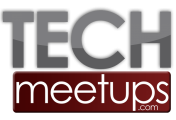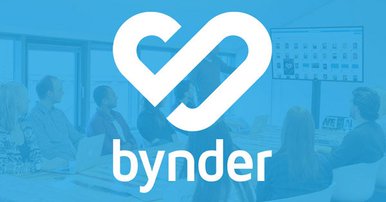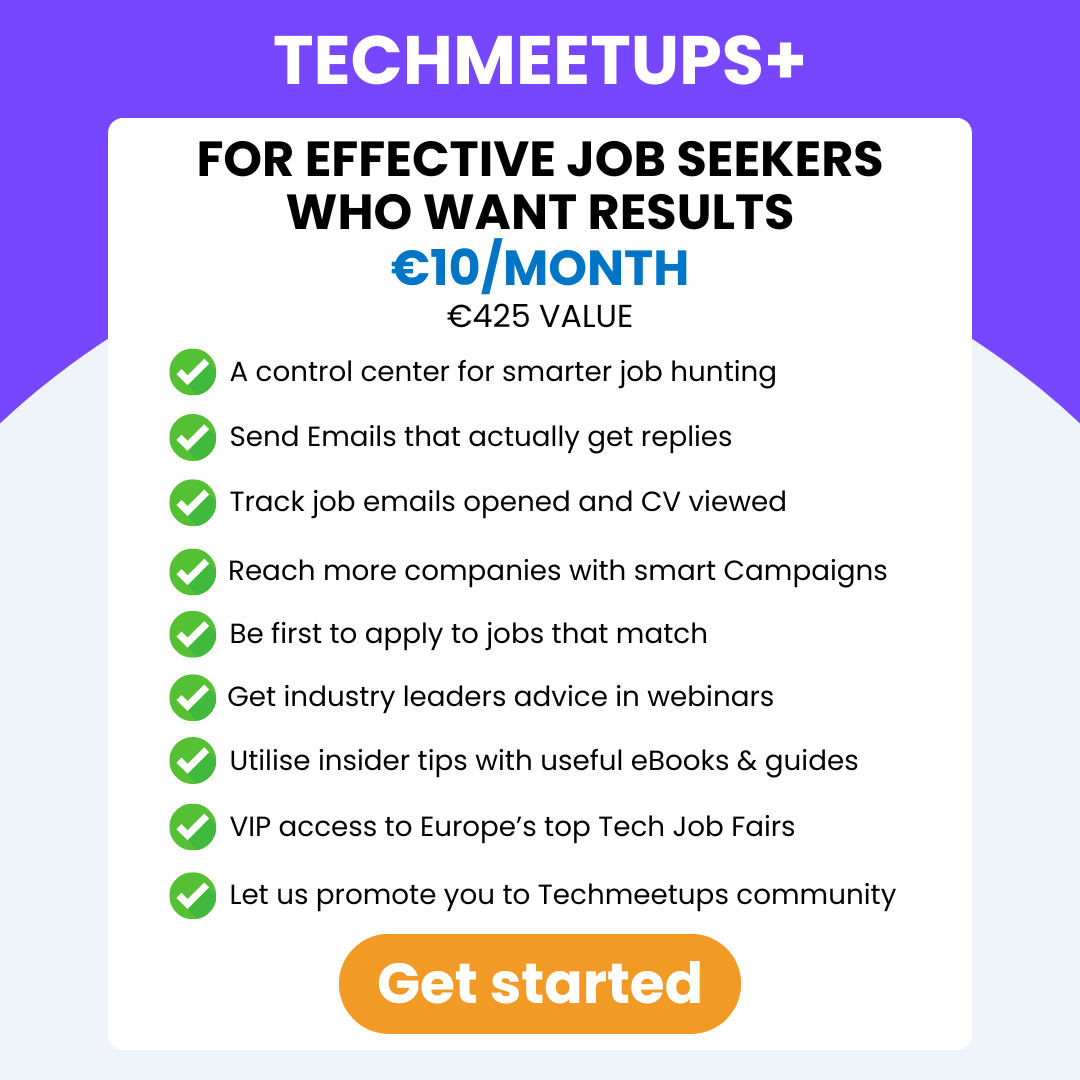The biggest pain point for many creative teams in achieving balanced efficiency: meeting deadlines but producing the best design outcome. Scaling back the time spent labouring over administrative tasks will create more room for creativity—and this is where digital asset management (DAM) can help.
With a DAM tool, you can accelerate the design process by using a centralized place for all digital files as well as communication channels, making it incredibly easy to find and share any file and to handle projects more straightforwardly.
This article will unveil how to use Bynder’s digital asset management to boost team efficiency and save approximately eight hours per week on managerial and repetitive tasks. But best of all, it shows you have to save you and your team from any communication frustrations.
Daily design tasks and challenges are like
Daily tasks as a designer working in marketing typically involve receiving design briefs, assigning responsibilities and deadlines, creating design concepts and getting feedback. Finalized work then needs to be shared with the wider team in a smart and efficient way.
Designers have to distribute, to name just a few; campaign materials, social media banners, retargeting advertising banners, whitepapers, e-books, event posters, and flyers to various individuals who may all prefer a different communication method. As marketing design activities expand to keep pace in the content race, this in itself can pose a significant time challenge.
Assets, assets everywhere
Aligning schedules, keeping everyone in the loop, and sticking to deadlines—they’re all dependent upon one key factor: good communication. Before Bynder, designs were shared over and over again via email, meaning that feedback was not always clear and often points could be missed or miscommunicated, which resulted in a significant waste of time.
Another challenge—which some designers might neglect before it becomes a real headache—is the management of growing asset collections. But, when you’re dealing with a lot of digital files and trying to track, say, the latest version of a social banner, an outdated icon that should be archived, or templates for each type of files, it becomes almost impossible without a system to store and maintain all design files.
However, the biggest headache of them all is, arguably, safeguarding brand identity. It’s a critical mission for design teams to keep the brand style consistent across all channels and the power of branding is what can make or break your brand story.
Is digital asset management the cure to all your pains?
We’ve looked at the challenges, so let’s look at the goals. Designers aren’t complicated creatures; all we want is:
- More time to spend focusing on creative work rather than administrative tasks;
- To increase the use of all completed design work—both externally and internally;
- Control of brand guidelines to ensure everything is on-brand;
- A communication channel that helps us work better.
So, how can DAM help with all of this?
Digital asset management can offer designers
- Centralized storage for all design files plus an easy way to search and find the right file within seconds;
- A single-source-of-true to all design files;
- Streamlined design workflows and centralized communications around the process of creating;
- Brand guidelines so that work is on-brand;
- Publishing-on-demand module for customizing and localizing templates without added design work.
DAM is the single-source-of-true to all design files
Have you ever worked for a company where every team member stored their digital files in a different place? Frustrating, isn’t it, searching through online storage systems and offline hard drives looking for one particular asset while watching your colleagues use the wrong files over and over again.
A secure, centralized cloud-based storage solution can put a stop to these frustrations. By organizing assets based on a taxonomy structure, DAM makes it a whole lot easier to find files using filters, tags and other advanced search methods.
A solution to communication hassles: no more emails
Bynder offers a creative project management module that organizes workflows into four levels: campaign -> job -> stage -> task
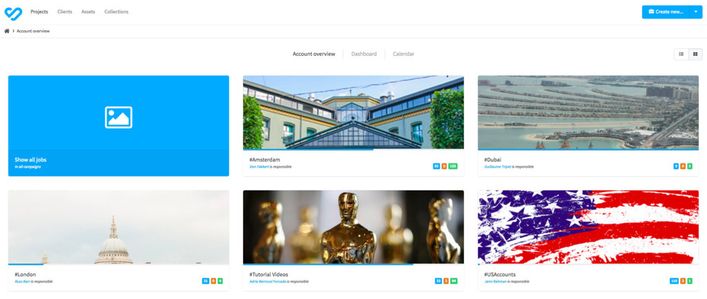
We have many campaigns in Bynder, it’s not just marketing using it
Different from most project management tools, Bynder’s creative project module (CPM) is fully integrated to help better process and track the life stages of all assets.
All job stages can be preset in admin settings—meaning you can decide how many stages you need for each, and what users are responsible for what. The first stage of all design workflows features required forms so that design teams can collect as much information as possible regarding requests. In the following stages, we can add tasks and assign all the relevant stakeholders—it’s as simple as a to-do list per stage.
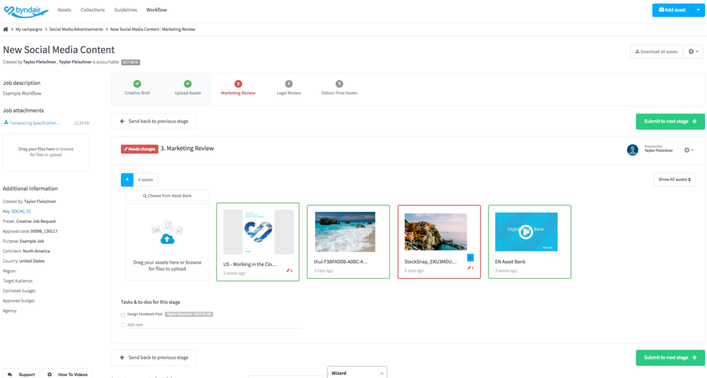
The first stage of a design project
One core feature of the CPM module is the ability to communicate with all associated stakeholders of a task. For example, a designer could read the submitted job spec and leave annotations directly within the workflow as well as tag those who’s attention is needed.
For design—and pretty much all creative work—the first draft is hardly the final version. Therefore, it’s important that we intelligently gather feedback to push the process forward. Rather than rely on emails that just loop round and round or desk chats that almost always interrupt you when you’re in the middle of a job, CPM solves the problem by allowing direct annotation on assets in workflows.
This is how it looks:
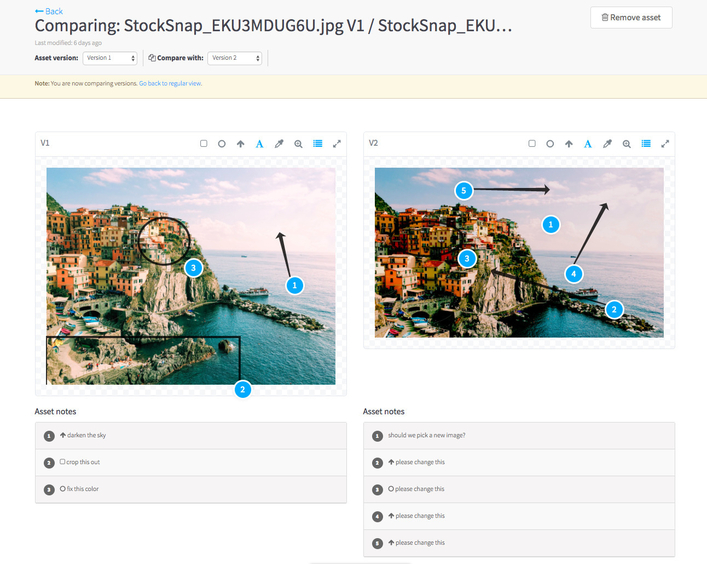
Direct version comparing views with annotations
We can save up to three hours per week in meetings and delays caused by administrative tasks or miscommunication. It allows us to concentrate on creative works. That’s what us designers really in need of.
After a final version is approved, the new design will be automatically added into the asset bank and made available for anyone to use immediately.
Never get asked again to change the text in a poster
The publishing-on-demand (POD) module is relatively new to the Bynder family, but it’s already proving an essential tool.
The magic of POD module lies in its ability to convert InDesign files into branded online templates. Therefore, all your colleagues can just go ahead and customize and localize editable content in the templates—meaning design only have to dedicate time to the original and not all its derivatives.
All branded items can be downloaded or directly sent to printing services via the module. With the right integrations, you can also post designs direct to social media.
Stick to the rules and conquer the power of branding
Consistency is a fundamental rule of branding. A great brand should always communicate in the same style and tone-of-voice across all channels.
For design, it breaks down into brand colours, logos, fonts, and templates. The most common issue here is that while a company may have brand guidelines, only the design team is sticking to it, which means designers often have to spend time fixing off-brand mistakes. Even if you are lucky enough to have wonderful colleagues who always stick to the rules, it’s still hard to ensure external parties to use your logo correctly.
The best solution is to make the guidelines easily accessible so that everyone is aware of them and able to refer to them at any time.
Because of its importance to your brand identity, and your designer’s sanity, Bynder has a whole module dedicated to these guidelines.
Bynder’s internal design guidelines, accessible for everyone to follow
If you want to learn more about digital asset management, download the free whitepaper The Definitive Guide to Digital Asset Management to learn how it can benefit you and your team, and keep your designers sane.
Great post by Ljubica Jovanova via https://blog.bynder.com
How can Techmeetups.com help you?
Technology Meetups, Events, Job boards, Blog, Promotion & Marketing
www.techmeetups.com
Techmeetups is a Global Tech Community existing 9 years, with 22 interconnected communities, 75 organized job fairs, 1100+ hiring companies and 65,000+ startups, students and graduates, professionals, coders, salespeople, financiers, marketers & developers across the world.
We help companies through Events like Meetups, Open House, Networking Event, Job Seekers Night, Drinks & Demo, Pitch night, Candidates Interview Event, recruITech, Workshops, Hackathons, Job Fairs, Developers Speed Dating, Matchmaking Event.
Join our events and communities in London, Berlin, Amsterdam, Barcelona, Paris, Lisbon, Stockholm, Madrid, Copenhagen, Hamburg, Munich, Dublin, Bern, Zurich, Stuttgart, Frankfurt
www.techstartupjobs.com to help you recruit your tech team.
Explore Techmeetups events
